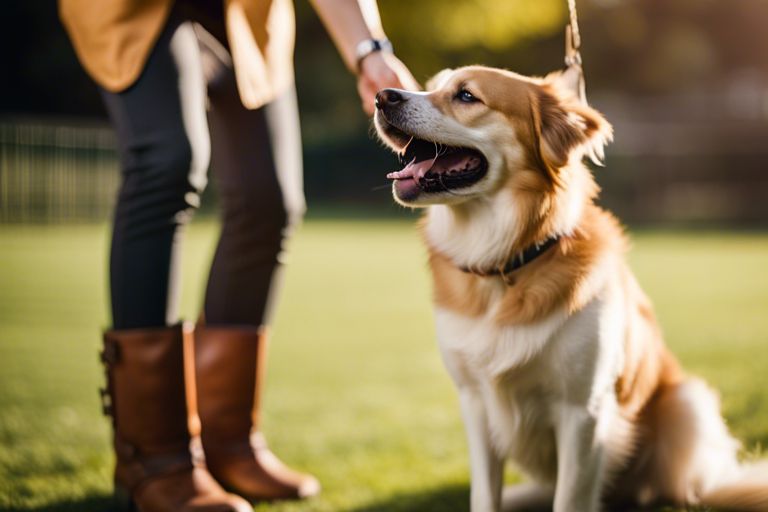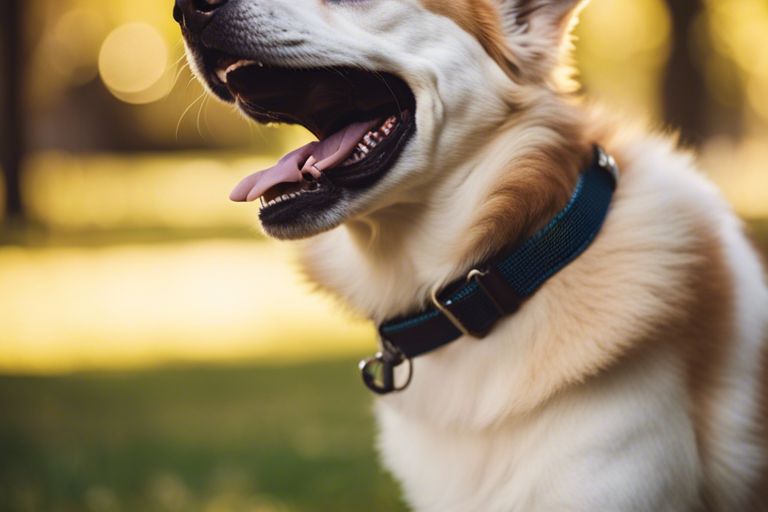Many dog owners are eager to unlock their furry friends’ full potential, and understanding the science behind positive reinforcement is key to achieving this goal. By delving into the principles of reinforcement, we can not only train our pets effectively but also strengthen our bond with them. Learn how to apply these scientifically proven techniques to bring out the best in your beloved canine companion.
Key Takeaways:
- Positive Reinforcement is Key: Using positive reinforcement techniques such as treats, praise, and playtime can help shape your dog’s behavior in a gentle and effective way.
- Understand Your Dog’s Needs: Each dog is unique, so it’s important to understand your pooch’s personality, breed traits, and individual preferences to tailor your training approach accordingly.
- Consistency is Crucial: Consistent training routines, clear communication, and patience are crucial in helping your dog reach its full potential and become a well-behaved companion.
The Science Behind Positive Reinforcement
The field of animal behavior has shown us that positive reinforcement is a powerful tool in shaping behavior. By understanding the science behind positive reinforcement, dog owners can unlock their pooch’s full potential and strengthen the bond between them.
Defining Positive Reinforcement
One of the key principles of positive reinforcement is the concept of adding a desirable stimulus to increase the likelihood of a behavior being repeated. This can include treats, praise, or toys, which serve as rewards for your dog’s good behavior. By consistently rewarding positive actions, you can encourage your pooch to exhibit those behaviors more frequently.
How Dogs Learn and Respond
Reinforcement plays a crucial role in how dogs learn and respond to stimuli in their environment. When a behavior is followed by a reward, such as a treat or affection, dogs are more likely to repeat that behavior in the future. This process strengthens the neural pathways associated with the desired behavior, making it more likely to occur again.
It’s important to note that timing is key when using reinforcement to train your dog. Rewards should be given immediately after the desired behavior to ensure that the association between the behavior and the reward is clear in your pooch’s mind.
Debunking Common Myths
It is crucial to address common misconceptions surrounding the use of positive reinforcement in dog training. In the subsection below, we will explore these myths and shed light on the truth behind positive reinforcement techniques.
The Misconceptions Surrounding Positive Reinforcement
An important misconception regarding positive reinforcement is that it is synonymous with permissiveness or lack of discipline. Some may believe that using treats or praise to train a dog will result in a spoiled or unruly pet. However, positive reinforcement, when used effectively, actually sets clear boundaries and promotes desirable behaviors in a gentle and respectful manner. It is not about letting the dog have free rein, but rather about guiding their actions through encouragement and rewards.
Separating Fact from Fiction
On the contrary, positive reinforcement is based on the principles of behavioral psychology and has been scientifically proven to be one of the most effective methods of training dogs. By rewarding good behavior, dogs learn what is expected of them and are more likely to repeat those actions. This approach strengthens the bond between the dog and their owner, creating a positive learning environment. It is a myth that positive reinforcement is only suitable for easy-going dogs; in fact, dogs of all breeds and temperaments can benefit from this training method.
Fiction: Positive reinforcement is only effective for basic commands.

Laying the Foundation
Many dog owners begin their journey of training their pooch with the best intentions but may not always know where to start. Establishing trust and building a strong relationship with your furry friend is crucial in setting the stage for successful training.
Establishing Trust and Building Relationships
Laying the foundation of positive reinforcement training begins with trust. Dogs are incredibly intuitive creatures and can sense your emotions and intentions. By creating a safe and nurturing environment for your pooch, you are laying the groundwork for a strong relationship built on trust and mutual respect.
Consistency is key in building trust with your dog. By being predictable in your actions and reactions, you are providing a sense of security for your furry companion. Take the time to understand your dog’s body language and cues, and always respect their boundaries.
Setting Clear Boundaries and Expectations
An integral part of positive reinforcement training is setting clear boundaries and expectations for your furry friend. Dogs thrive on structure and routine, so establishing rules and boundaries from the beginning is vital in shaping their behavior.
Setting clear expectations also involves being mindful of your own behavior. Dogs are observant and can pick up on subtle cues from their owners. By maintaining a calm and assertive demeanor, you are setting a positive example for your pooch to follow. Consistency in enforcing boundaries and expectations will help your dog understand what is expected of them and foster a harmonious relationship between you and your furry companion.
Rewarding Good Behavior
Despite the many training methods available, one of the most effective ways to teach your canine companion is through positive reinforcement. By rewarding good behavior, you can encourage your dog to repeat desirable actions. This method not only strengthens the bond between you and your furry friend but also makes learning fun and engaging for your pooch.
The Power of Positive Reinforcement Markers
Any time you are training your dog, it’s important to use positive reinforcement markers to communicate when your pet has done the right thing. These markers can be a clicker, a word like “Yes,” or a specific gesture. The key is to consistently use the marker immediately after your dog exhibits the desired behavior, followed by a reward such as a tasty treat or a favorite toy. This clear communication helps your dog understand which actions earn praise and rewards, speeding up the learning process.
Choosing the Right Rewards for Your Dog
On your quest to unleash your pooch’s potential, selecting the right rewards is crucial. Different dogs have different preferences, so it’s important to experiment to see what motivates your furry friend the most. Some dogs are food-driven and will do anything for a treat, while others may prefer toys, playtime, or verbal praise. Power up your training sessions by incorporating a variety of rewards to keep your dog engaged and excited to learn. Do not forget, the reward should be something your dog finds reinforcing and enjoyable.
Shaping Desired Behaviors
Breaking Down Complex Behaviors into Manageable Steps
All dogs have the potential to learn new behaviors, no matter their age or breed. In the matter of shaping desired behaviors, breaking down complex tasks into smaller, more manageable steps is key. By focusing on incremental progress, you can set your pooch up for success and make the training process more achievable.
Using Chaining to Build Complex Behaviors
Complex behaviors, such as performing a series of commands in sequence, can be challenging to teach. Using chaining, a training technique where individual behaviors are linked together to form a complete sequence, can help break down the process into easier-to-learn parts. By reinforcing each step in the chain, you can gradually build up to the desired complex behavior.
Chaining is a valuable tool in dog training because it helps dogs understand the connections between different behaviors and reinforces the importance of completing each step in the sequence. This method not only builds confidence in your pooch but also strengthens their problem-solving skills and ability to follow cues effectively.
Overcoming Common Challenges
Addressing Frustration and Impatience
Challenges arise when training your furry friend, and it’s important to address them with patience and understanding. If you find yourself frustrated or impatient during training sessions, take a step back and reevaluate the situation. Your pooch can sense your emotions, so staying calm and positive is key to successful training. Note, learning takes time, and each dog progresses at their own pace. By approaching training with a patient and positive attitude, you can create a harmonious environment for both you and your dog to thrive.
Managing Distractions and Environmental Factors
Any distractions or environmental factors can impact your dog’s ability to focus during training sessions. It’s necessary to set up a conducive training environment free from distractions and noises that could divert your pooch’s attention. Consider using treats or toys to keep your dog engaged and motivated during training. Additionally, establishing a consistent routine and training schedule can help your pooch stay focused and make steady progress.
- Avoid training in noisy or busy areas.
- Keep training sessions short and fun to prevent boredom.
Any sudden noises or interruptions can disrupt your dog’s concentration and hinder the training progress. Creating a calm and distraction-free space for training can foster a positive learning experience for your furry companion. Consistency is key in overcoming distractions and environmental factors, so stay patient and persistent in your training efforts. With time and dedication, you and your pooch can conquer any challenges that come your way.
Summing up
Hence, it becomes clear that positive reinforcement is a powerful tool in unlocking your pooch’s potential. By utilizing science-backed techniques, dog owners can create strong bonds with their pets while helping them learn and grow in a positive way. This approach not only enhances the well-being of the dog but also fosters a harmonious relationship between human and canine.
FAQ
Q: What is positive reinforcement in dog training?
A: Positive reinforcement is a training method that involves rewarding your dog for displaying desired behaviors. This can include treats, praise, toys, or affection to strengthen the likelihood of the behavior being repeated.
Q: How can positive reinforcement benefit my pooch?
A: Positive reinforcement can enhance your pooch’s learning experience by promoting trust, good behavior, and a strong bond between you and your furry friend. It also helps in shaping desirable habits and reducing unwanted behaviors in a gentle and effective way.
Q: What are some tips for effectively using positive reinforcement with my dog?
A: To make the most of positive reinforcement, be consistent, patient, and clear in your communication with your dog. Use high-value rewards, set clear expectations, and always reward good behavior promptly. Do not forget, positive reinforcement is all about creating a positive and loving training environment for your pooch.

